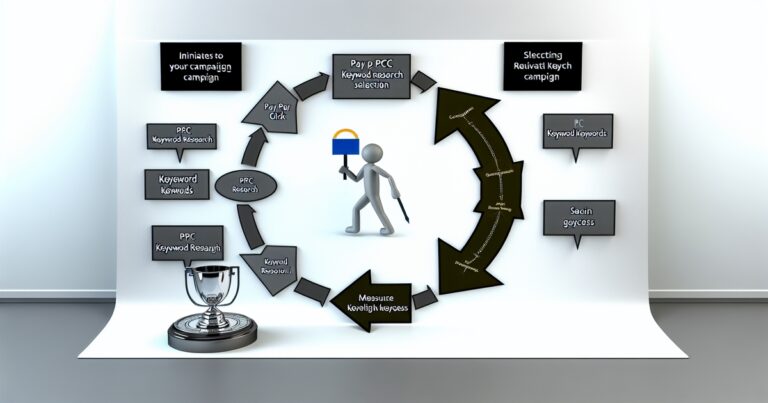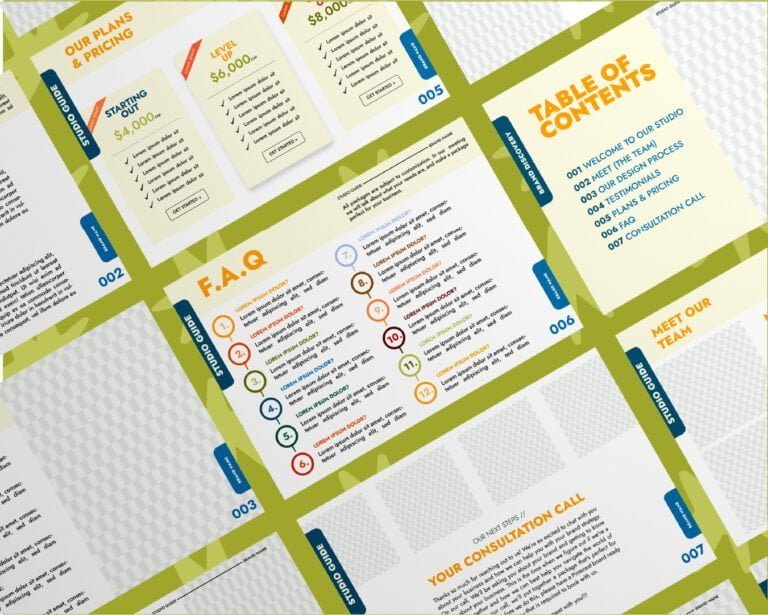Ever wondered how some brands, through skilled marketers, seem to hit the jackpot with every Pay-Per-Click (PPC) campaign by crafting compelling ad copy, testing different ad variations, and employing effective bidding strategies? The secret’s out: it’s all about mastering advanced PPC analytics techniques. In today’s fast-paced digital marketplace, simply setting up a campaign and hoping for the best won’t cut it. You need to dig deeper, leveraging cutting-edge strategies to analyze data like a pro. From uncovering hidden patterns in user behavior to optimizing your bids for maximum ROI, these tactics are game-changers. Whether you’re a seasoned marketer or just dipping your toes into the vast ocean of digital advertising, getting a grip on these techniques can skyrocket your results and set you apart from the competition.
Key Takeaways
- Embrace advanced analytics in PPC to gain a competitive edge, focusing on strategies that delve deeper into data for actionable insights.
- Identify and monitor the right Key Performance Indicators (KPIs) to accurately measure the success of your campaigns and make data-driven decisions.
- Overcome analytics challenges by staying informed about common pitfalls and developing a clear plan to address them, ensuring the integrity of your data.
- Utilize advanced bidding strategies and audience targeting techniques to optimize your ad spend and reach the most relevant audiences effectively.
- Enhance your landing pages and ad copy based on analytics insights to improve conversion rates and user engagement, tailoring content to meet audience needs.
- Commit to continuous improvement by leveraging the latest analytics tools and staying abreast of future trends in PPC analytics to adapt strategies accordingly.
Role of Advanced Analytics
PPC Analysis
Advanced PPC analytics techniques play a crucial role in assessing ad spend efficiency for marketers, offering pro tip reports that account for various factors. This involves looking at how each dollar is spent and gauging its impact on campaign success. By analyzing this, businesses can pinpoint areas where they’re getting the most return on investment.
Identifying high-performing keywords is another key aspect. It’s about marketers using advanced analytics tools to find which terms and ad copy keywords drive the most traffic and conversions. This knowledge allows for smarter bidding strategies and better allocation of budget towards what truly works.
Comparing current campaigns with advanced analytics tools against historical data offers marketers insights into progress and ROI over time. It helps understand if strategies are improving and which tactics yield consistent results across different periods.
Strategy Integration
Aligning PPC with overall marketing goals ensures that every effort contributes to the larger objectives of the business. It’s about making sure that marketers use advanced analytics tools to ensure that paid search efforts complement other marketing activities rather than operate in isolation, with the goal of benefiting businesses.
Incorporating SEO insights for a comprehensive strategy enhances performance across both channels. Understanding which organic keywords perform well can inform marketers and businesses about analytics-driven paid keyword strategies, creating a cohesive approach to search visibility with the goal of improving performance.
Leveraging cross-channel data for unified messaging is vital for consistency in communication with your audience. By using insights from social media, email marketing, and other platforms, marketers can ensure their PPC ads resonate well with broader marketing messages, aligning analytics and businesses’ goal.
Measuring Success
Defining clear, measurable objectives is the first step toward success in any PPC campaign. Goals for marketers and businesses should be specific, achievable, relevant, and time-bound (SMART), guided by analytics. Without these objectives, it’s challenging to gauge whether or not your efforts are paying off.
Utilizing conversion tracking tools provides marketers and businesses with concrete analytics data on actions taken by users after clicking an ad. This includes purchases made or forms submitted—a critical measure of campaign effectiveness.
Analyzing click-through rates (CTR) and conversion rates gives marketers and businesses insight into how compelling your ads are to your target audience; high CTRs indicate that your ads are relevant while high conversion rates show they’re convincing enough to prompt action through analytics.
Advanced Analytics Strategies
Granular Analysis
Granular analysis takes a deep dive into keyword-level performance. This involves looking closely at which keywords are driving traffic and conversions. By doing so, businesses can use analytics to adjust their keyword strategy for better marketing results.
Segmenting data by demographics and location is another layer of granular analysis. It helps marketers and businesses understand who your audience is, where they come from, and how analytics can provide insights. This information allows for more targeted ad campaigns.
Ad placement effectiveness is crucial too. Detailed analysis here shows which platforms or website sections bring the most value. Marketers in businesses can use this analytics insight to optimize ad placements, focusing on high-performing areas.
Predictive Analytics
Predictive analytics uses historical data to forecast future trends. It’s about understanding what happened in the past to predict what might happen next. This analytics approach helps businesses in preparing strategies that align with future demands.
Identifying potential market shifts before they happen gives businesses a competitive edge. By analyzing patterns, businesses can anticipate changes and adapt quickly.
Optimizing bids for anticipated changes in demand is key for businesses in PPC campaigns. Predictive analytics allow for bid adjustments based on expected market movements, ensuring efficient spending while maximizing visibility during peak times.
Machine Learning
Machine learning automates bid adjustments using performance data. This means bids are optimized not just based on static rules but ongoing campaign performance insights for businesses.
Using AI to predict customer behavior patterns makes targeting more effective. Machine learning algorithms analyze vast amounts of data to identify trends that businesses might miss.
Enhancing targeting precision through algorithmic learning leads to better campaign outcomes for businesses: higher conversion rates at lower costs due to improved relevancy.
Advanced analytics tools play a vital role across these strategies for businesses, providing the necessary insights for informed decision-making.
Key strategies like granular analysis, predictive analytics, and machine learning transform how businesses manage PPC campaigns.
- Granular Analysis: Focuses on micro-level details such as keyword performance and demographic segmentation.
- Predictive Analytics: Uses past data trends to prepare for future market conditions.
- Machine Learning: Automates complex processes like bid adjustment based on real-time performance metrics.
Key Performance Indicators
Identifying KPIs
KPIs, or Key Performance Indicators, are vital for businesses in measuring the success of PPC campaigns. It’s crucial to select metrics that reflect your business goals. Not all data points offer valuable insights. Some are vanity metrics that look good on paper but don’t impact your bottom line.
First, understand what you aim to achieve with your PPC efforts. Is it more website traffic, higher sales, or increased brand awareness? Once clear, prioritize those KPIs that directly relate to these objectives.
For example, if boosting sales is the goal, focus on conversion rates and cost per acquisition (CPA). These figures tell you not just how many clicks you’re getting but how many of those clicks turn into actual sales.
Setting benchmarks is another critical step. Compare your performance against industry standards or past campaign results. This helps identify areas needing improvement.
Analyzing Trends
To stay ahead in the competitive digital landscape, monitoring PPC trends specific to your industry is essential. What works for one sector might not work for another. Keeping an eye on these trends allows you to adapt and refine strategies over time.
Seasonal fluctuations also play a significant role in campaign performance. For instance, retail businesses may see a spike in traffic during holiday seasons while experiencing lulls at other times of the year.
Emerging keyword opportunities can be goldmines for PPC campaigns. Tools like Google Trends can help spot these opportunities early on by showing search patterns over time.
Optimizing Campaigns
Optimizing campaigns ensures they reach their full potential and deliver maximum ROI. Refining targeting parameters helps narrow down the audience to those most likely interested in what you’re offering. Adjusting bids for optimal ad placement guarantees visibility without overspending. Testing different ad formats assesses which ones resonate best with your target audience—be it text ads, display ads or video ads.
Overcoming Analytics Challenges
Data Interpretation
Translating raw data into insights is crucial. It turns numbers into stories. This process helps us understand what’s happening in our PPC campaigns. For example, a sudden spike in clicks could mean your ad resonated with the audience.
However, not all data is straightforward. Identifying anomalies requires a keen eye. Sometimes, what seems like a performance dip could be an external factor at play. Maybe there was a holiday, and web traffic was generally lower.
Drawing correlations between different sets of data can reveal hidden truths about your campaigns. Perhaps higher sales on weekends correlate with increased mobile device use. Recognizing these patterns allows for strategic planning and optimization.
Actionable Insights
After understanding the data, the next step is to derive practical steps from it. This means turning analysis findings into actions that improve campaign performance. If mobile users convert more over the weekend, you might allocate more budget to mobile ads during those days.
Implementing changes based on insights can significantly boost campaign results. But remember, adjustments should be monitored closely to ensure they’re having the desired effect.
Sharing insights across teams ensures everyone benefits from the learnings derived from PPC analytics techniques advanced strategies involve collaboration across departments for integrated improvements. For instance:
- The marketing team learns which messages resonate best.
- The product team understands customer preferences better.
- Customer service gets insights into potential issues or questions customers have.
Advanced Bidding Strategies
CPA and ROAS
Calculating cost per acquisition (CPA) accurately is crucial. It tells you how much it costs to acquire a new customer. This calculation helps businesses understand their spending better. To do this, divide the total cost of your campaign by the number of acquisitions.
Evaluating return on ad spend (ROAS) guides budget allocation effectively. It measures the revenue generated for every dollar spent on advertising. A high ROAS indicates a successful campaign, while a low one suggests areas for improvement.
Balancing between acquisition costs and profitability is essential. Businesses aim to lower CPA while maximizing ROAS. This balance ensures that advertising efforts are both efficient and effective.
Smart Bidding
Utilizing Google’s automated bidding strategies can save time and improve results. These strategies adjust bids automatically to maximize conversions or conversion value in each auction—a feature known as “auction-time bidding.”
Adjusting bids based on conversion probability enhances performance significantly. For instance, if data predicts a higher chance of conversion from certain users, smart bidding will increase bids for those opportunities accordingly.
Leveraging machine learning for bid optimization offers several benefits:
- Automated adjustments in real-time.
- Improved targeting based on user behavior.
- Enhanced efficiency through pattern recognition.
Smart bidding uses advanced algorithms to analyze vast amounts of data quickly—much faster than any human could—allowing advertisers to focus more on strategy rather than manual bid adjustments.
Audience Targeting and Segmentation
Advanced Targeting
Advanced targeting is key to reaching the right people. Marketers use layered targeting options for more precision. This means they combine several criteria to define their target audience. For example, they might target visitors based on demographics and interests at the same time.
Integrating audience insights makes ads more personalized. By understanding what users like or do online, marketers can create ads that speak directly to them. This approach boosts user engagement significantly.
Exploring niche markets through detailed segmentation opens new doors. It allows marketers to discover untapped audiences with specific needs or preferences. Tailoring messages to these groups can lead to higher conversion rates than broader strategies.
Segmentation Techniques
Breaking down audiences by behavior and interests is a smart move. It helps in understanding who visits your website and why. You might find out that certain content attracts different types of visitors.
Customizing messages for different audience segments increases relevance.
- If one segment enjoys sports content, show them ads related to sports gear.
- Another segment might prefer tech news; tailor your messaging accordingly.
Analyzing segment-specific performance metrics guides future decisions.
- See which segments respond best and focus more resources there.
- Adjust campaigns that aren’t performing well with specific demographics or interests.
Enhancing Landing Pages and Ad Copy
Technical Optimization
Optimizing landing pages boosts conversions. It’s crucial for advanced PPC analytics techniques. A well-optimized page keeps visitors engaged, guiding them towards making a purchase or signing up.
First, assess your landing page’s load time. Fast-loading pages retain more visitors. Use tools like Google PageSpeed Insights to check speed and get improvement tips.
Next, ensure the content is relevant to your ad copy. This relevance increases your Quality Score on platforms like Google Ads. A higher score means lower costs per click and better ad placement.
Finally, streamline how ads are delivered. Efficient delivery mechanisms reduce bounce rates and improve user experience.
Click-Worthy Copy
Crafting compelling headlines is key in attracting attention. Your headline should promise value or solve a problem that resonates with your audience.
Descriptions support headlines by providing more details or benefits of clicking through. They should be concise yet informative, pushing the reader towards action.
A/B testing different calls-to-action (CTAs) helps identify what works best for your target audience.
- Test phrases like “Learn More” versus “Sign Up Now” to see which drives more clicks.
- Experiment with button colors or sizes as visual cues can also impact conversion rates.
Tailoring ad copy is essential for matching audience intent learned from segmentation strategies discussed previously.
- For product-focused ads, highlight unique features or offers.
- If targeting based on interests, use language that appeals directly to those interests.
Leveraging Analytics Tools
PPC Analytics Platforms
Selecting the right PPC analytics platforms is crucial for digging deeper into your ad performance. Different tools offer unique features. Some are great at visualizing data, while others excel in detailed reporting. Comparing these features helps you find the best fit for your needs.
Google Ads and Bing Ads provide built-in analytics that’s powerful but sometimes not enough. Integrating third-party tools can fill this gap. Tools like SEMrush or Ahrefs offer insights Google might miss. This combination becomes a powerful tool for understanding your PPC campaigns better.
Dashboards play a vital role too. They give you an at-a-glance view of how ads perform across different platforms. You don’t have to dig through reports to see if you’re hitting KPIs; dashboards show it all at once.
Real-Time Analytics
Real-time analytics change the game entirely for PPC campaigns. Monitoring campaign performance as it happens lets you react fast to any changes in the market or audience behavior.
Imagine launching a new ad and seeing engagement metrics spike immediately on your dashboard. This immediate feedback allows quick tweaks to maximize impact and ROI. Tracking these instant metrics means decisions are based on fresh data, making them more likely to succeed.
Pros of real-time analytics:
Immediate insight into campaign performance
Quick adjustments enhance ad effectiveness
Fresh data leads to informed decisions
Cons include:
Can be overwhelming due to constant data flow
Risk of over-tweaking based on short-term trends
Analytics isn’t just about looking back; it’s also about acting now with real-time insights.
Continuous Improvement Practices
A/B Testing
A/B testing stands as a cornerstone in the realm of advanced PPC analytics techniques. It’s all about putting two versions of an ad head-to-head to see which one performs better. This could mean tweaking headlines, changing images, or even adjusting call-to-action buttons. The goal is to find out what resonates most with your audience.
After launching these variations, it’s crucial to measure their performance meticulously. Look at click-through rates, conversion rates, and any other relevant metrics that align with your goals. Let’s say you have two landing pages: one with a testimonial near the top and another without it. If the page with the testimonial consistently converts better, you’ve just gained valuable insight into what your audience prefers.
But A/B testing isn’t just a one-and-done deal. It requires continuous application for each new campaign or ad set you run. By consistently applying this technique, you’ll gradually refine your ads’ effectiveness over time.
Ongoing Monitoring and Testing
To truly excel in PPC management, ongoing monitoring and iterative testing are non-negotiables. Regularly reviewing campaign metrics allows marketers to spot trends early on—be they positive or negative—and adjust strategies accordingly.
This process involves more than just glancing at numbers; it means diving deep into data sets to understand why certain patterns emerge. For instance, if you notice a gradual decline in engagement rates despite stable spending levels, it might be time to refresh your creative content or revisit targeting criteria.
Moreover, staying updated with platform changes is vital for maintaining competitive edge in PPC advertising:
- Google often updates its algorithms.
- Facebook introduces new ad formats regularly.
- LinkedIn continuously tweaks its user interface.
Each of these changes can affect how well your ads perform unless you adapt swiftly.
In parallel with adapting to platform updates, experiment within controlled environments before rolling out major strategy shifts across all campaigns:
- Test new keyword combinations on a small scale first.
- Experiment with different bidding strategies within limited budget segments.
- Introduce innovative ad formats incrementally while monitoring their impact closely.
By embracing both A/B testing and ongoing monitoring/testing practices diligently under advanced PPC analytics techniques umbrella:
- You ensure that every dollar spent works harder towards achieving desired outcomes.
Future Trends in PPC Analytics
Innovative Techniques
Emerging technologies are reshaping PPC analytics. Voice search optimization is a prime example. More people use voice commands to find what they need online. Adapting PPC strategies to include voice search can set you ahead.
Experimenting with new ad formats or channels could unlock potential. Think outside traditional platforms like Google and Facebook. Try ads on newer platforms or in different formats, such as interactive or video ads.
Leveraging social media signals is another innovative technique. Social interactions can guide your PPC campaign refinement, helping understand audience preferences better.
Responsive Search Ads
Responsive Search Ads (RSAs) allow for dynamic content adaptation. This means your ads can change based on who’s searching and what they’re looking for. It’s about making each ad more relevant to each user.
Google’s machine learning tests various headline and description combinations for RSAs. This testing helps find the best mix that resonates with your target audience.
Analyzing RSA performance metrics is crucial for fine-tuning messaging. Look at which combinations perform best and why. Use this data to improve future campaigns.
Final Remarks
Diving into advanced PPC analytics isn’t just a step up; it’s a game changer for your marketing strategy. We’ve journeyed through the nuts and bolts—from crunching numbers in advanced analytics, slicing through audience segments, to fine-tuning your ad copy and landing pages. It’s clear, mastering these techniques can significantly boost your campaign’s performance. But remember, it’s not about throwing everything at the wall and seeing what sticks. It’s about smart choices, continuous improvement, and keeping an eye on future trends to stay ahead.
So, what’s your next move? Don’t let this be just another read. Take action. Experiment with these strategies, leverage the latest tools, and always aim for better results. Your PPC campaigns have the potential to soar—grab the reins tightly. Let’s make those clicks count!
Frequently Asked Questions
What role does advanced analytics play in PPC?
Advanced analytics dives deep into your data, uncovering insights that help fine-tune your campaigns for better performance. It’s like having a super magnifying glass for your PPC efforts.
How can I use advanced analytics strategies to improve my PPC campaigns?
Leverage predictive modeling and segmentation to forecast trends and personalize ads. Think of it as using a crystal ball to see what clicks with your audience before they even click.
What are some key performance indicators (KPIs) crucial for PPC analytics?
Focus on conversion rate, cost per acquisition (CPA), and return on ad spend (ROAS). These KPIs are the pulse of your campaign’s health—always keep an eye on them.
How do I overcome common analytics challenges in PPC?
Start by ensuring accurate tracking setup and stay updated with platform changes. It’s akin to keeping your GPS calibrated; you don’t want to get lost in data inaccuracies.
Can you explain advanced bidding strategies for maximizing ROI in PPC?
Think about using algorithmic bidding like hiring an expert trader for your ads—it automatically finds the best bid value spots to maximize returns without overspending.
Why is audience targeting and segmentation important in PPC?
Segmentation lets you tailor messages precisely, like crafting personalized invites instead of broadcasting announcements through a megaphone. This ensures higher engagement rates from the right people.
How can enhancing landing pages and ad copy boost my PPC performance?
It’s all about making a great first impression. A compelling landing page with matching ad copy is like greeting someone with a firm handshake—it sets the tone for everything that follows.









